Surgical lighting in hospitals, surgical centers and other facilities is important for the success of surgical procedures and the comfort of surgical teams. Surgical lighting is one of the most important elements in the operating room. Your surgical team must be able to see accurately -- with clear visibility, adequate brightness, minimal shadow, and no glare.
Surgical teams need lots of light and clear vision to perform surgery. The surgical lamp you choose must provide focused, bright lighting directly to the surgical site where it is most needed, providing clear and accurate vision for your surgeon and surgical team. Medical teams expect the best performance from their medical equipment, especially surgical lighting.
If you are considering purchasing a new surgical lamp for your surgical practice, consider the following when choosing LED and halogen lamps. Let's take a closer look at the detailed pros and cons of halogen and LED lighting.
Advantages of halogen lamps:
Halogen bulbs typically cost much less to buy than LED bulbs. However, keep in mind that this is only a reference to the initial cost. You must also consider the costs associated with operating halogen and LED light systems over their lifetime. Halogen bulbs are easily discarded after their life cycle. They can go in the trash with your organization's daily trash (although you shouldn't try to recycle them).
1. It's relatively cheap
2. Easy to handle
3. The bulb can produce bright light
4. The bulb has medium reliability and has been used in surgical lamps for many years
Disadvantages of halogen lamps:
Halogen lamps usually produce thermal infrared light. To meet the needs of your surgical team, this light must be filtered to produce cold white light that is more similar to daylight or natural light. In general, halogen beams must undergo color rendering to provide white natural light for optimal visual environment.
In order for halogen lamps to burn brightly, they must produce a large amount of heat. This often creates an uncomfortable environment for surgical teams, who are likely to work directly under the fire. This working environment can lead to fatigue during longer surgical procedures, which increases the risk of misjudgments and errors. Burns can also occur if members of your team come into contact with overheated halogen lamps, and potentially dangerous situations can occur if you are handling highly flammable materials.
Another disadvantage of halogen bulbs is the necessary power required to maintain the lighting system. Halogen bulbs consume a lot of electricity, resulting in lower energy efficiency and higher monthly energy costs.
Shorter bulb life also needs to be considered. Halogen lamps will be replaced more frequently than LED bulbs. In fact, it's not unheard of for halogen bulbs to need to be replaced every year to 18 months, resulting in replacement costs running into thousands of dollars.
Unfortunately, halogen bulbs also tend to fail without warning. Your team may find themselves needing to turn off light bulbs or activate backup lights during surgery.
Even if halogen bulbs burn out, they are relatively easy to buy and replace. Philips has been the leading manufacturer of halogen surgical lamps, and while Philips halogen bulbs are still available, surgical lamp manufacturers are rapidly moving to LED surgical lamps.
Halogen lamps typically produce thermal infrared light -- which must be filtered to produce cold white light that more closely resembles natural light.
In recent years, most surgical lamps have been based on halogen bulbs. Recent developments in technology have made LED (light-emitting diode) lights easier than ever to use in surgical centers. LED technology has evolved from something simply high-tech and novel to something that has the potential to become part of everyday life in many operating rooms around the globe.
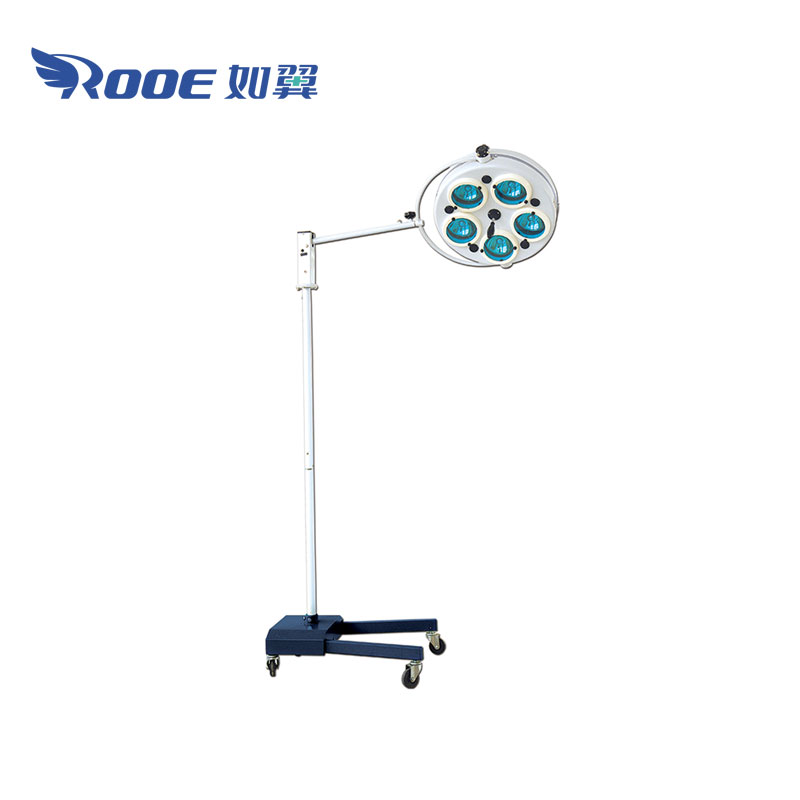 | 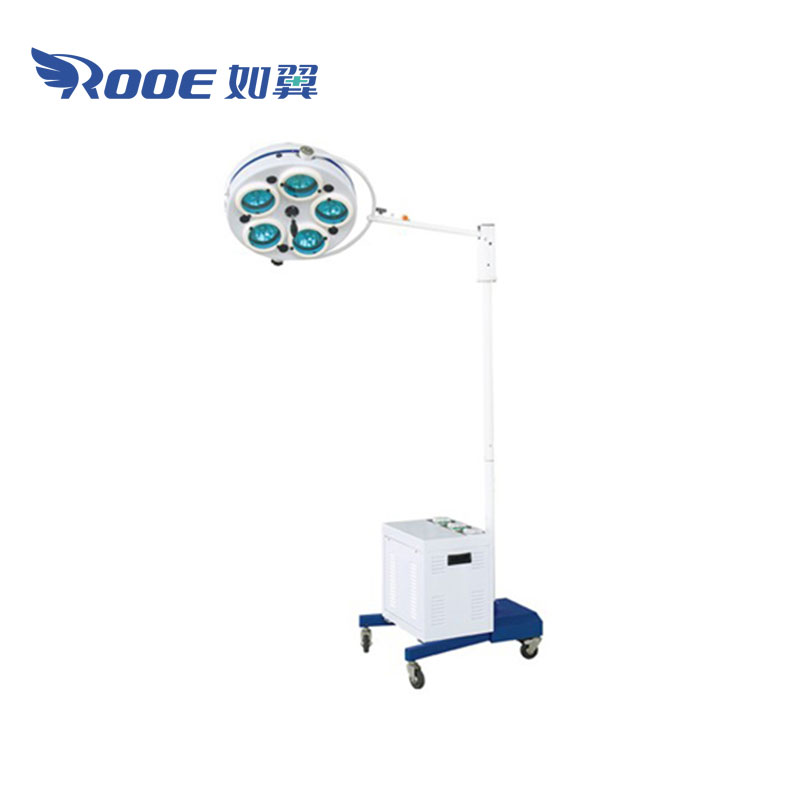 | |
| AKL05L Ceiling Model | AKL05L . I(stand type) | AKL05L .l(AC/DC) |
Advantages of LED lights:
LED lamps produce significantly whiter and cooler light than halogen lamps. These bright lights improve visibility, while the lower temperatures help ensure the surgical team stays as comfortable as possible. This is particularly useful in lengthy or otherwise demanding procedures to minimize the risk of error or misdiagnosis. With LED bulbs, your surgical team can see more realistic skin pigmentation and better overall color when examining patients, as they will work under outstanding natural colors, shadow control, and deep cavity lighting.
LED lights produce very little heat when turned on. You can touch the LED lights without worrying about getting burned, and you don't have to worry about starting a fire by placing combustible materials too close to the operating lights.
In terms of energy saving, LED lights are the clear winner. Leds are more energy efficient than halogen bulbs. They require much less power to produce light. Not only is this good for the environment, but LED lights will also lower your overall energy costs. Some manufacturers claim that LED surgical lights use up to 70 percent less energy than traditional light sources. In addition, LED lighting is considered a "green" technology because it reduces the number of bulbs in landfills and uses less energy.
Leds also provide longer bulb life. Your LED bulbs can look forward to decades, whereas halogen bulbs can take hours. In fact, LED surgical lights may last 30 times longer than halogen ones. Many estimates suggest that leds can burn for up to 50,000 hours without replacement. Bulb replacement takes nearly six years.
Unlike halogen bulbs, LED bulbs provide a warning before they fail. With proper testing and regular evaluation, the leds will wear off gradually, bringing your attention to the need to replace the bulb. You don't have to wait for it to exit in a medical procedure.
Other benefits of LED lighting systems include a variety of dimming options. Some lamps have up to five different light intensity Settings. They are also easy to dispose of and can be put in a regular trash can.
Disadvantages of LED lights:
One drawback to LED lighting is the upfront cost. LED bulbs are typically much more expensive than halogen bulbs, but they also last longer and use less energy. While LED lights have long-term value, they are a significant investment when equipping a new clinic or facility on a tight budget.
Periodic inspections are required to test the LED function and ensure that all LED lights are producing light appropriate for your operating room needs. You must plan for this and have appropriate inspection and testing procedures in place.
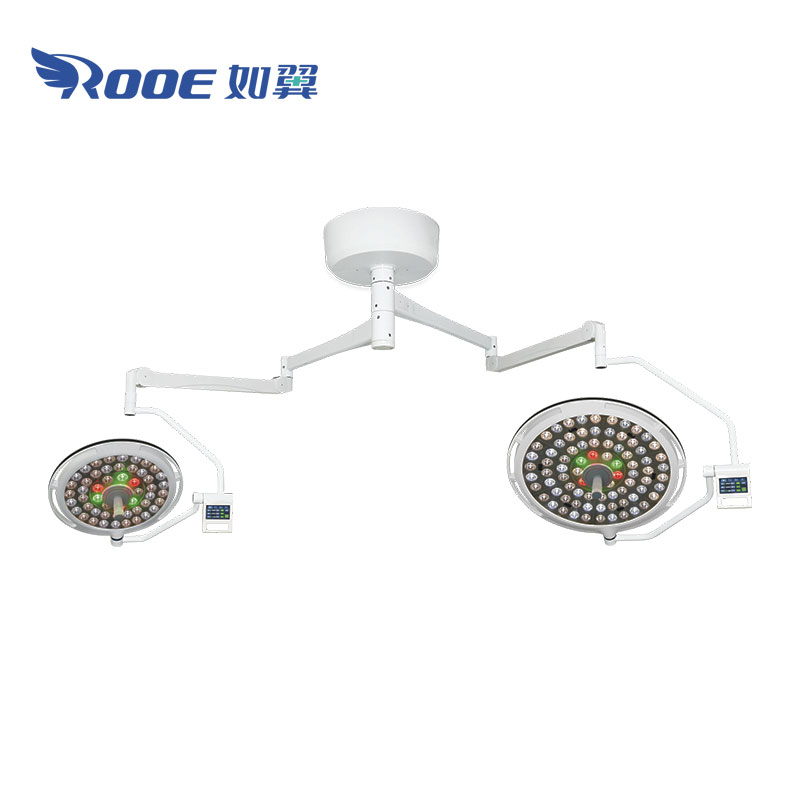 | 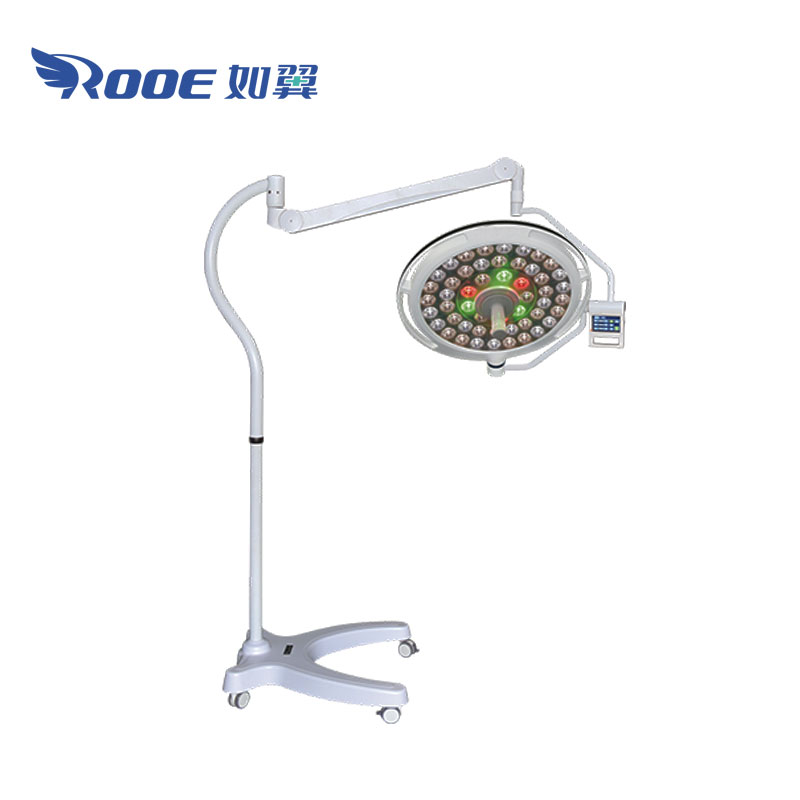 | 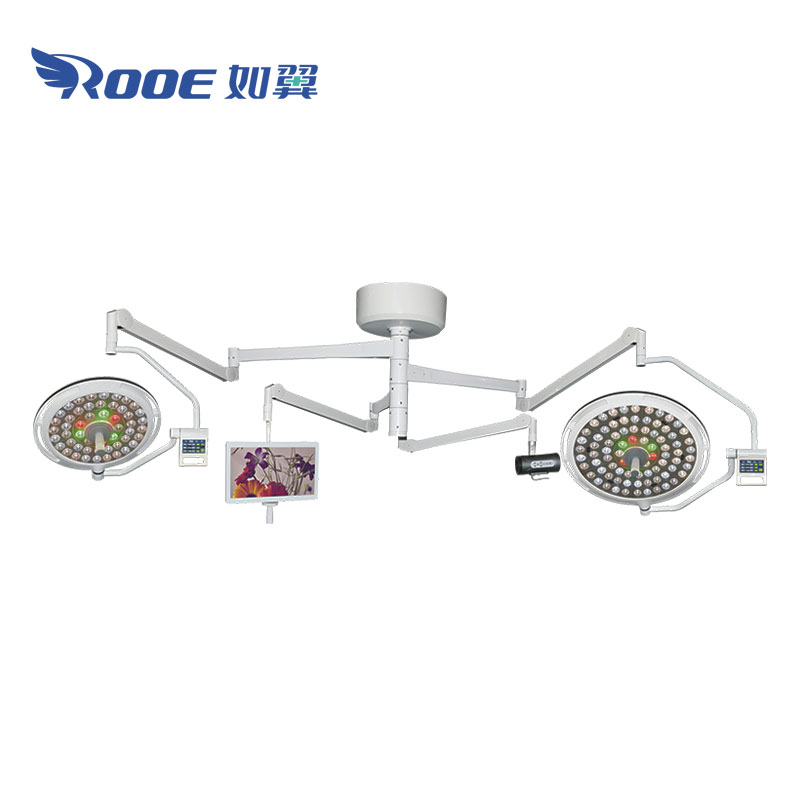 |
AKL-K500/K700 Ceiling Model | AKL-K500/K700 Stand Type | AKL-K500/K700 With Independent Camera System |